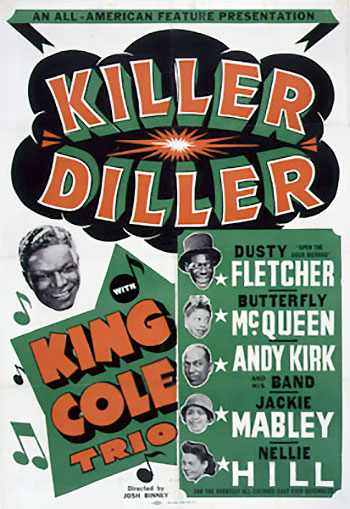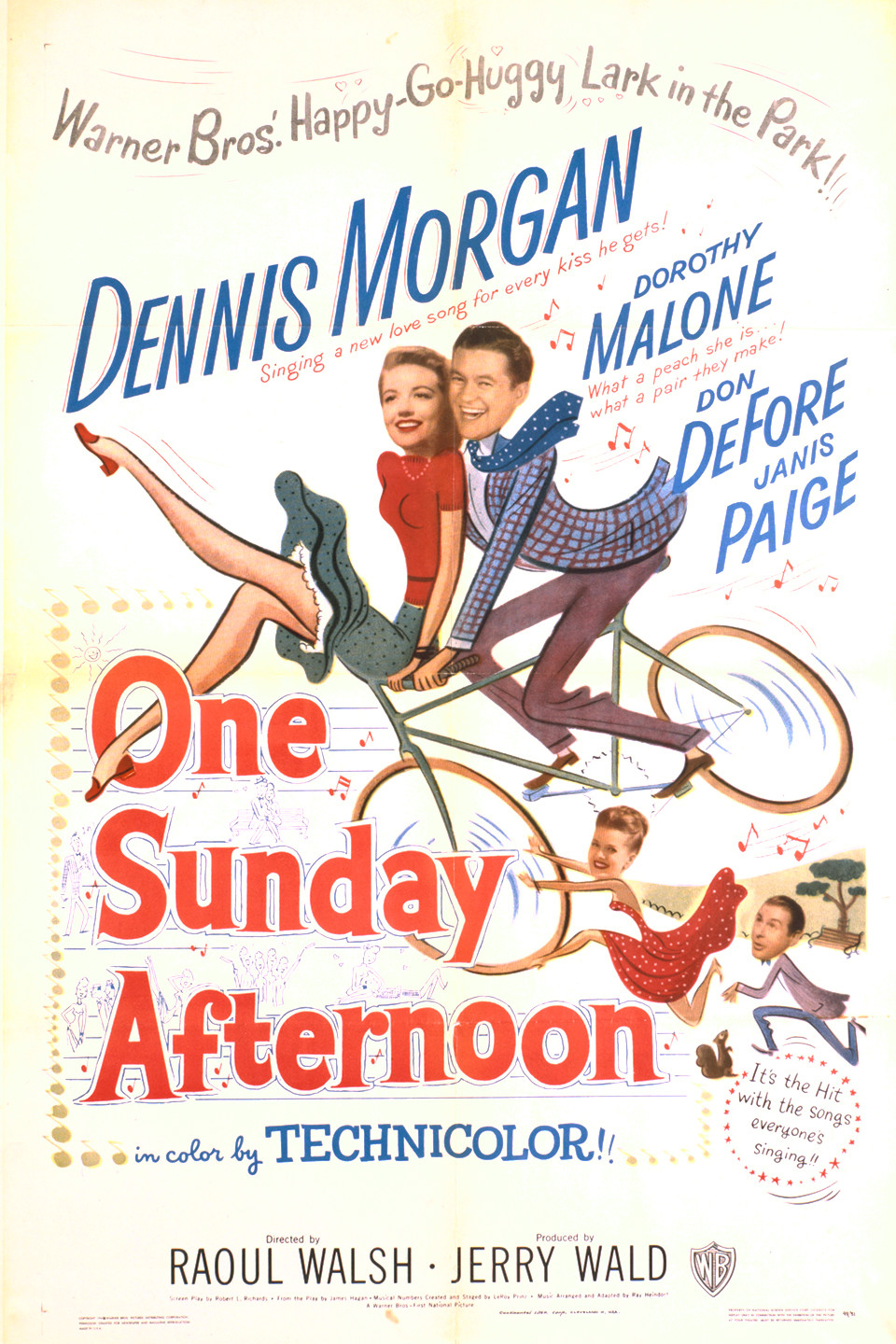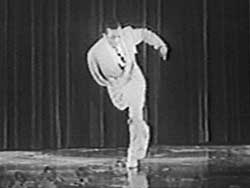With her gangster boyfriend under investigation by the police, a nightclub singer hides out in a musical research institution staffed by bachelor professors - one of whom begins to fall for her.
1h 53min | Comedy, Music, Musical | 19 October 1948
Director: Howard Hawks
Stars: Danny Kaye, Virginia Mayo, Benny Goodman, Hugh Herbert, Felix Bressart; more below.
https://www.imdb.com/title/tt0040820/
Remake of
Ball of Fire (1941), 8+ {nm}, with Howard Hawks at the helm for both. Also
repeating onscreen: Mary Field as Miss Totten, the heir of the man who funded the writing of the encyclopedia.
In '41 the encyclopedia was of language; now it's of music.
The big surprise/joke in casting is Benny Goodman as one of the long-hair professors, not one of the modern music makers. But he sure catches on quick to that swing.
Other character names have changed, but here's the comparison of the major roles:
Gary Cooper::Danny Kaye
Barbara Stanwyck::Virginia Mayo
Dana Andrews::Steve Cochran
garbage man Allen Jenkins::Buck and Bubbles window washers, revealing the professors' gap in knowledge.
Although Buck & Bubbles are a dance team, they do NOT dance in this film. They bring questions from a radio quiz show, and jazz up the answers the professors give. Buck plays piano, improvising jazz (et al) versions of Bach, etc. They inspire DK to go out in the city to collect some experts in the various divisions of jazz.
Then we get some all-star consultants to acquaint the profs to modern music:
Tommy Dorsey, Louis Armstrong, Lionel Hampton, Charlie Barnet, Mel Powell, Page Cavanaugh Trio, The Golden Gate Quartet. Hampton and Powell actually mention having made music with Benny Goodman, but that professor (BG) in particular has never heard of that musician.
The number of professors, the house in which they live and work, the plotline with the gangster (SC) and his moll (VM), the plan to marry in NJ are all the same.
Although we get the addition of some good music, the chemistry of Gary Cooper/Barbara Stanwyck is not matched by DK/VM at all.
This is the last of 5 film credits for The Golden Gate Quartette, whose voices/harmonies I recognized immediately, and associate with their first film, Star Spangled Rhythm ('42). I was able to see 4 of their 5 films in this quest.
It is nice that this film is racially integrated; you could not excise black performers without losing major pieces of the plot and music performances. When the jazz experts collect at the professors' home, they sit and play integrated too, nothing like the Follow the Boys (1944, Universal), where the planning for troop entertainment by H'wood stars is segregated (blacks in a different camera shot from whites.) For that alone I'll upgrade this to 7- from my prior 6 (no +/- possible) on 2010-01-31.
Goldwyn, distr. RKO, dir. Hawks; 7-































